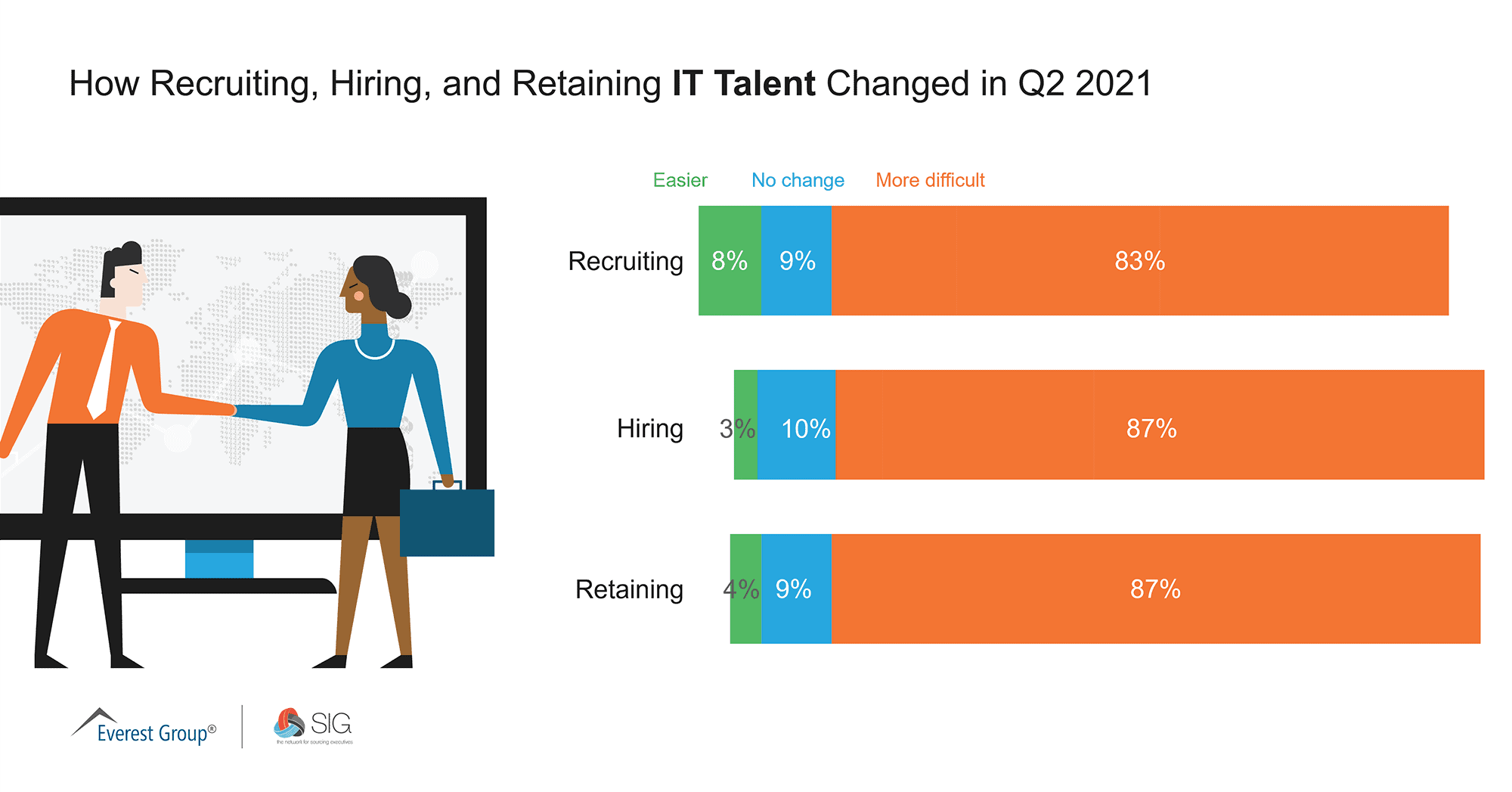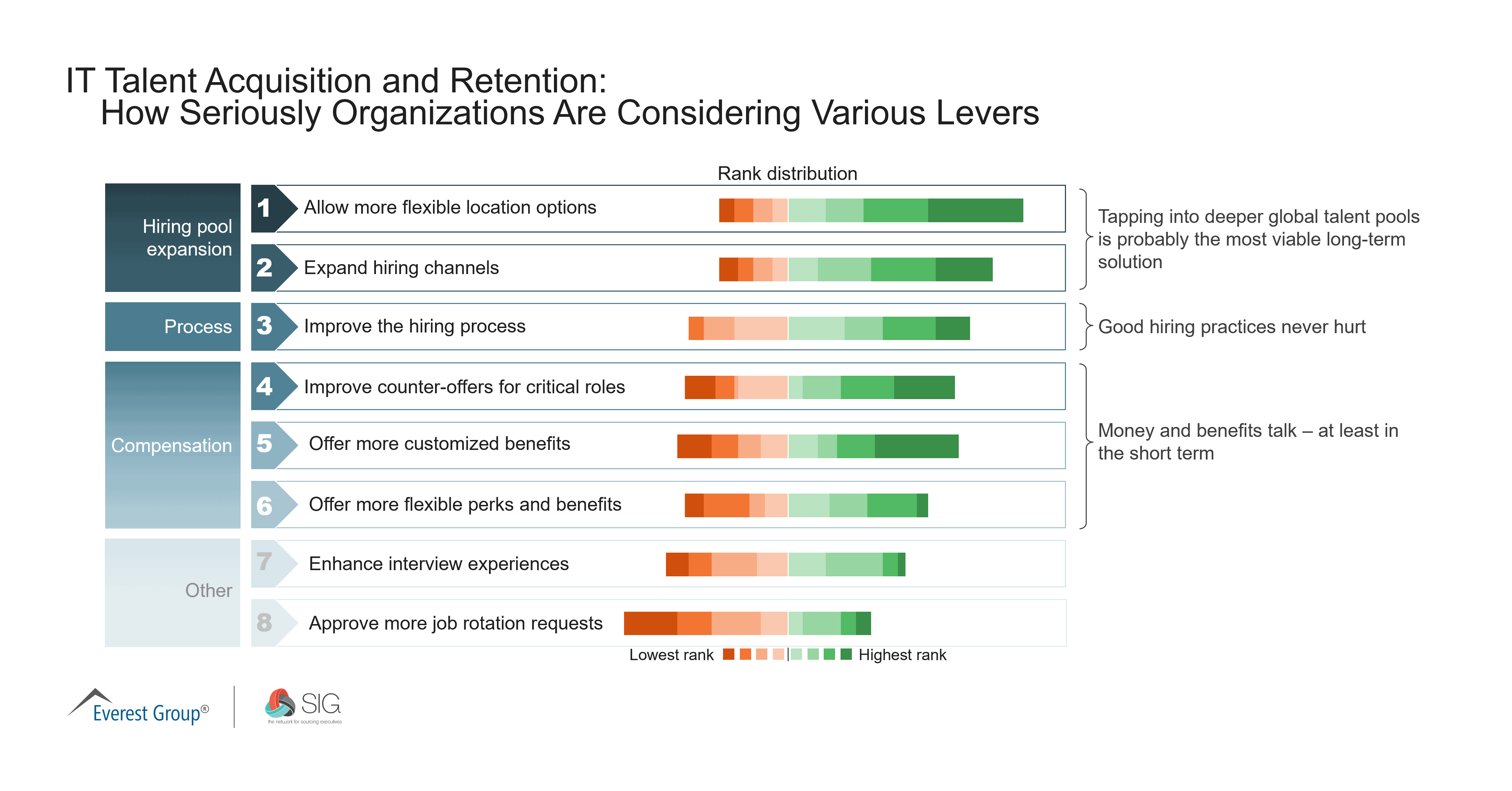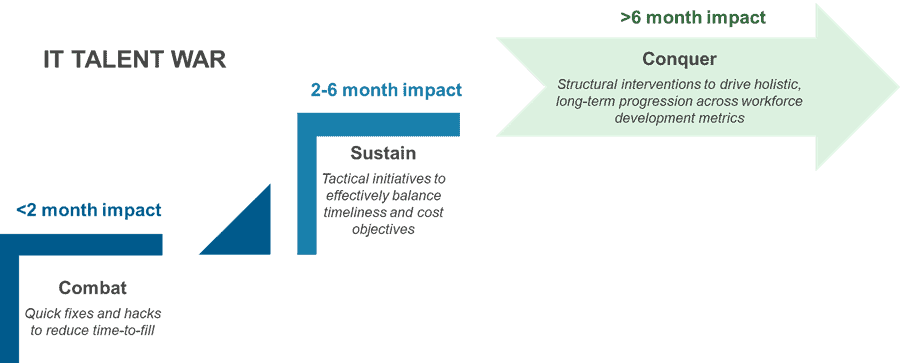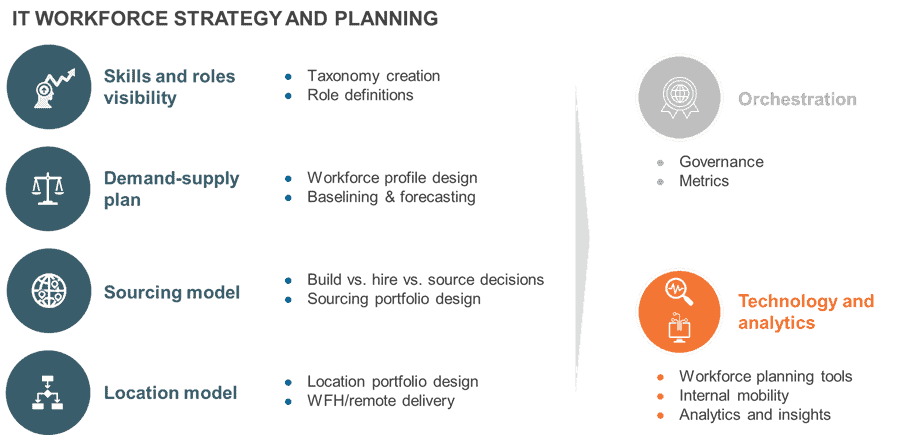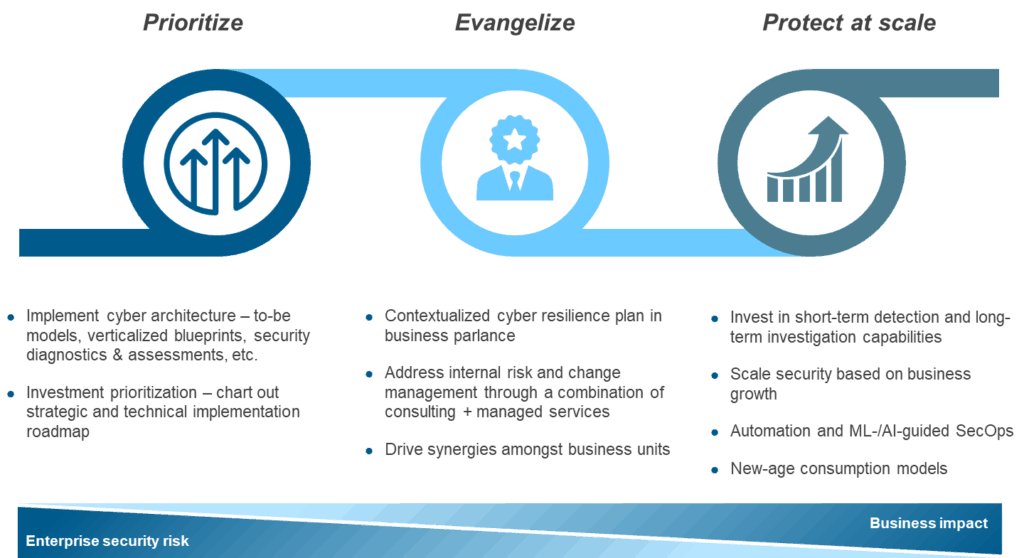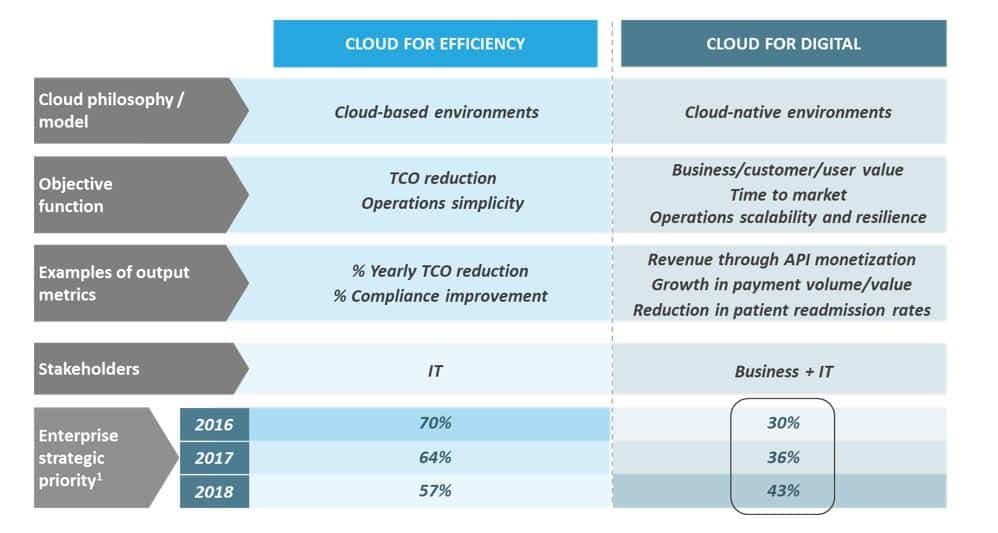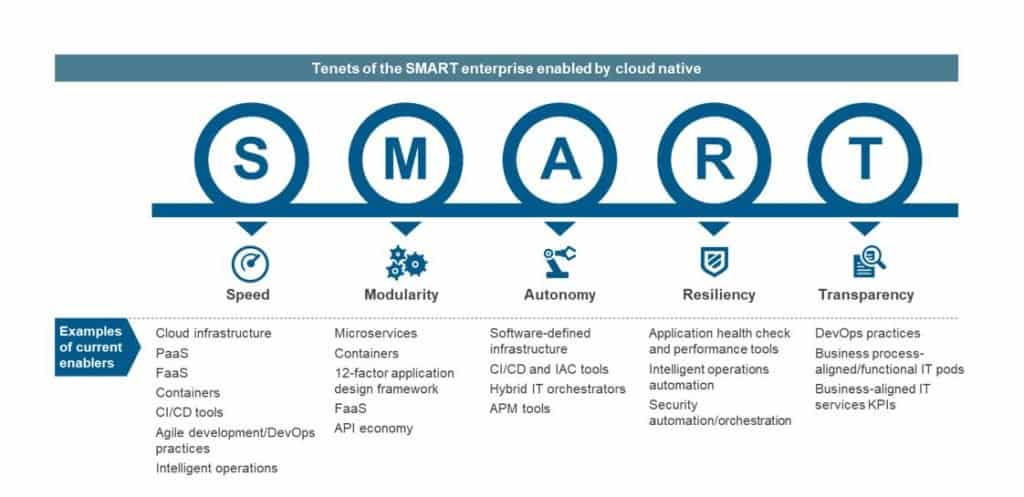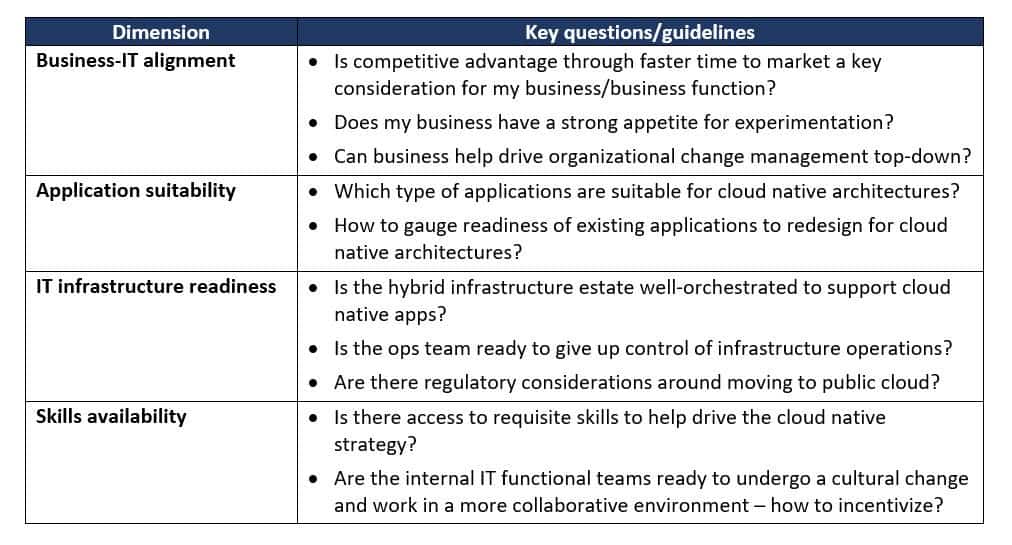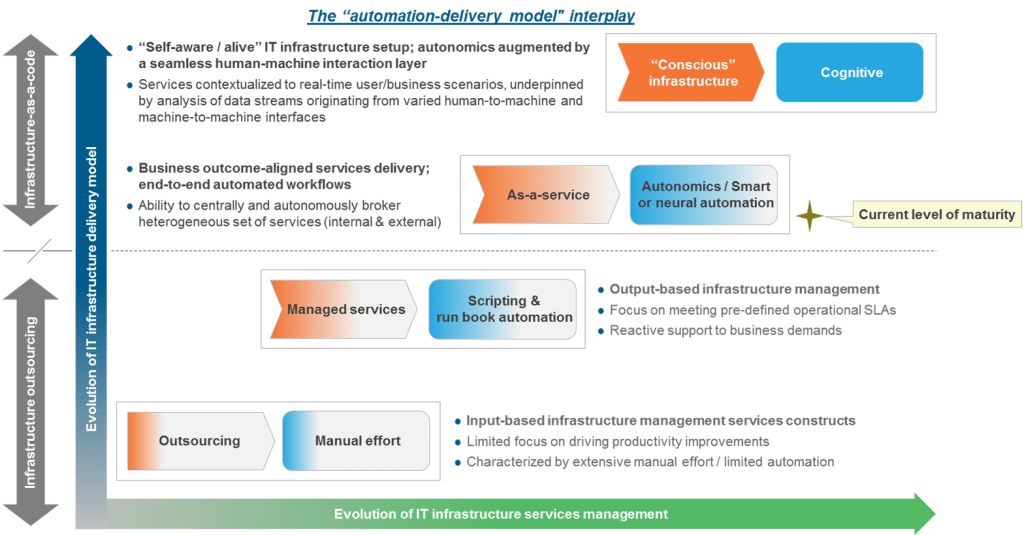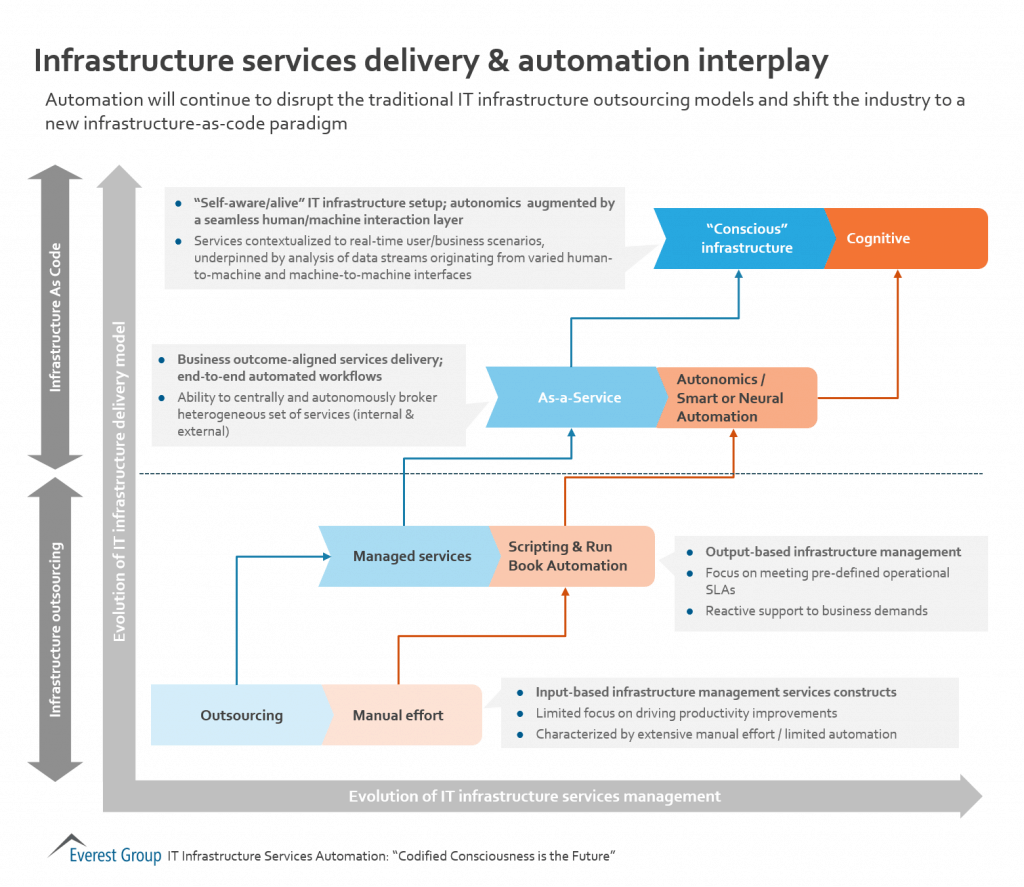April 9, 2021
Imagine brainstorming your customers’ journey with digital holograms of globally located developers, user experience (UX) designers, and business leaders, all collaborating organically with each other’s 3D replicas – something straight out of Star Wars and other sci-fi films! Such virtual interactions may be coming closer to reality with application software development kits (SDK) like Microsoft Mesh, a photo-realistic AR/VR application SDK for creating holograms, recently released at Microsoft Ignite 2021.
The advent of tools like Mesh makes it clear that the second wave of digital transformations will empower creators and communities and expand economic opportunities for global workforces. This comes as no surprise since the COVID-19 pandemic has driven lasting changes in the enterprise IT operating model as technology further becomes the foundation of doing business.
Enterprise IT functions are now expected to deliver enhanced employee experiences, rapidly adapt to business requirements, and mitigate operational risks to drive sustainable growth. These coincided with the pre-pandemic focus on personalized customer experiences and the pandemic-induced need for work-from-anywhere models.
The evolution of a new Agile

Agile software development has come a long way from its conception in the Agile Manifesto near the turn of the century. Since then, the traditional and widely accepted model with offshore and onshore delivery has helped many enterprises derive value out of their software and operations.
The pandemic threw the Agile model into chaos and tested its limits as the lockdowns bound team members to their homes. As enterprises rapidly transitioned into an Agile++ model, they replicated the processes, governance, and workflows of traditional Agile development. The pace of change also pushed the importance of remote collaboration and productivity technologies to connect teams to the forefront.
The increasing need for continuous value delivery alongside risk-efficient, employee-centric operations is driving enterprises to adopt the Distributed Agile methodology. In fact, 40 percent of the enterprises that participated in Everest Group’s 2021 Key Issues in Global Sourcing study are looking to adopt Distributed Agile as their de facto software development model.
True Distributed Agile
The next generation of Agile embraces a natively distributed nature. In a Distributed Agile model, communication, processes, and workflows are optimized for remote delivery. This is achieved by divesting focus from a location-based team model and building virtually proximate global feature pods. The operating philosophy rests on product teams structured as core teams comprised of architects and Agile feature pods. Each feature pod is laser-focused on end-to-end product features with no notions of an offshore-onshore construct. The Distributed Agile model will have a flexible location mesh covering:
- Hub (key delivery location)
- Spoke (secondary delivery location)
- Satellite (tertiary location)
- Work from home
Benefits of Distributed Agile
Significant cost savings: Contrary to typical apprehensions about the cost implications of Distributed Agile development, a feature pod approach is expected to cut operational costs by as much as 13 percent compared to a traditional Agile model.
Improved talent models: The location-agnostic nature of Distributed Agile helps improve access to quality talent by two to five times compared to traditional models. The overall increase in talent quality will overpower concerns around running virtually and an associated drop in productivity. A wider pool of candidates will make it easier to hire for niche skills in both older and emerging areas.
Enhanced BCP / Resiliency: In the Distributed Agile methodology, the risk of environmental disruptions is apportioned across various regions creating a more resilient business continuity model. The fundamental overlap of skills in a feature pod allows teams to manage short-term disruptions with ease.
Improved delivery model flexibility: The Distributed Agile model helps source talent from multiple locations, creating flexibility in the traditional pyramid. With virtual interaction as its foundation, this model allows firms to shift out of onshore/offshore delivery into location agnostic application delivery.
Societal and environmental benefits: Increased location flexibility allows employees to allocate more time for personal endeavors, thereby improving overall work satisfaction. Spoke and Satellite offices for a distributed workforce can rejuvenate smaller cities.
Setting the foundation for Distributed Agile
Because a Distributed Agile model fundamentally rethinks enterprises’ IT organization, substantial change in processes, people, and structure will accompany the technological shift. It will require a cultural and mindset shift at all levels of the IT organization that prioritize non-invasive governance and autonomy. Such a cultural shift can be built on what we named a foundation of TRUST.

Transparency: A change effort as extensive as this will compel enterprises to focus on measuring the productivity of adopting teams. Having holistic metrics that track the efficiency, efficacy, and timeliness of the team will equip enterprises with the information necessary to ensure lasting impact. This can be done by adopting practices such as using virtual whiteboard repositories, creating healthy backlogs with well-refined stories, clearly separating work duties, and optimizing the use of overlapping hours across the team locations.
Resilience: A Distributed Agile model creates a new set of vulnerabilities that need to be mitigated through a thorough leftward shift of security in the development process. Inclusion of security early in the development process relies on educating developers and testers on security aspects, including security as a key criterion in user stories, periodic reviews of security practices, and automated security across the CI/CD pipeline.
Understanding: This is about a stronger emphasis on softer work aspects that build psychological bonding between team members. Success in a Distributed Agile model will rely heavily on catering to employees’ self-actualization with critical focus on independent ownership, familiarity with members, and empathy for the individual members’ motivations and challenges.
Self-reliance: Driving self-reliance in a distributed agile setup will require following a ”Team of Teams” construct that provides autonomy to feature pods. Emphasis will also be placed on non-invasive governance through Scrum Masters for each team with a centralized scrum of scrums approach.
Tech bedrock: Technology will need to be seeded as the enabler of the shift to the Distributed Agile model. The IT backbone needs to be supplemented with a wide array of tools to foster collaboration, drive productivity, improve knowledge management, and enable continuous improvement.
As businesses emerge from the pandemic, we expect enterprises to consider shifting gradually to a Distributed Agile model. And we expect initiatives with high people complexity to be prime candidates for the first wave of adoption, followed by those with high project complexity. Enterprises can accelerate their adoption of Distributed Agile by engaging IT service providers to simplify and guide them through the change.
If you’d like to learn more about the Distributed Agile landscape, please reach out to us at [email protected], [email protected], and [email protected].




